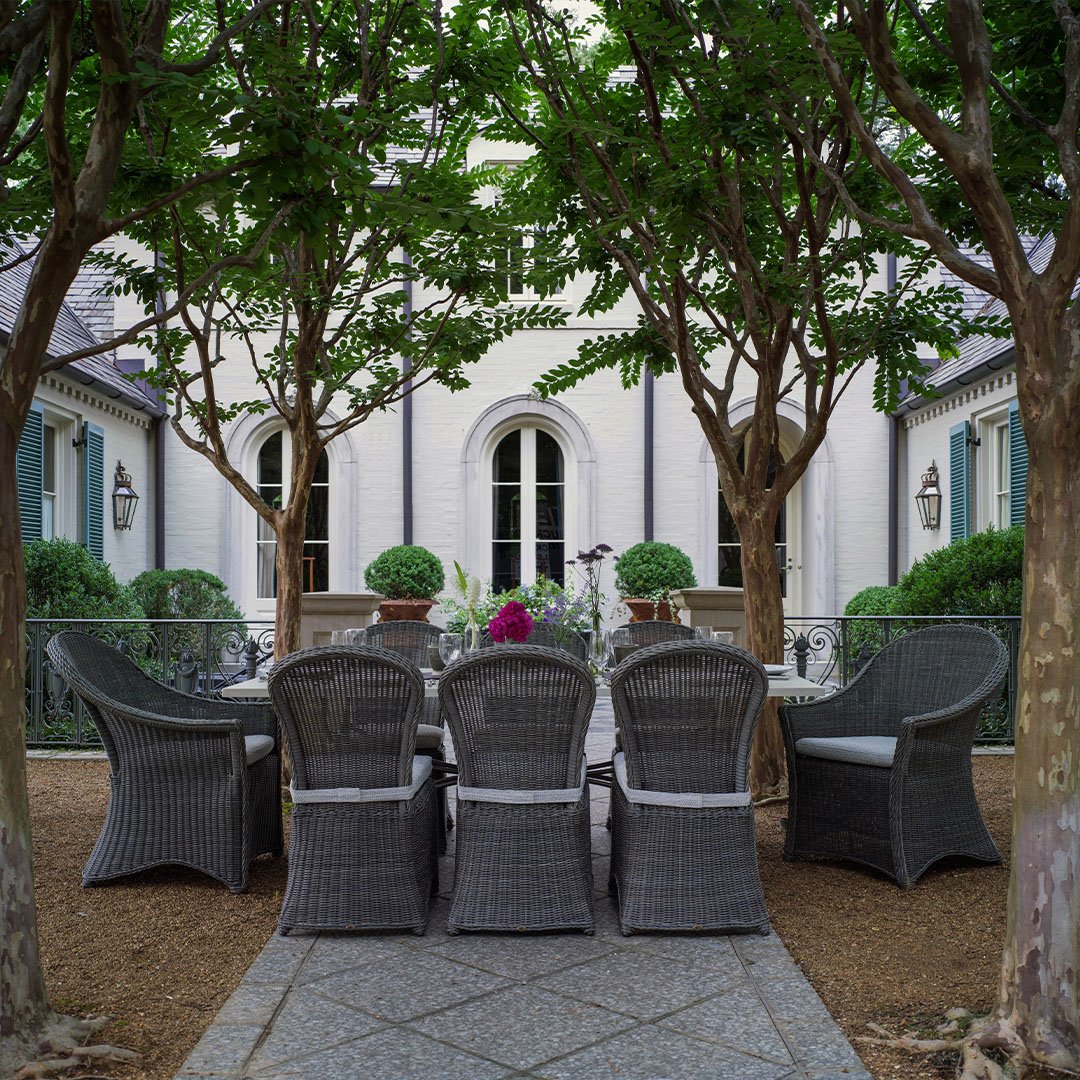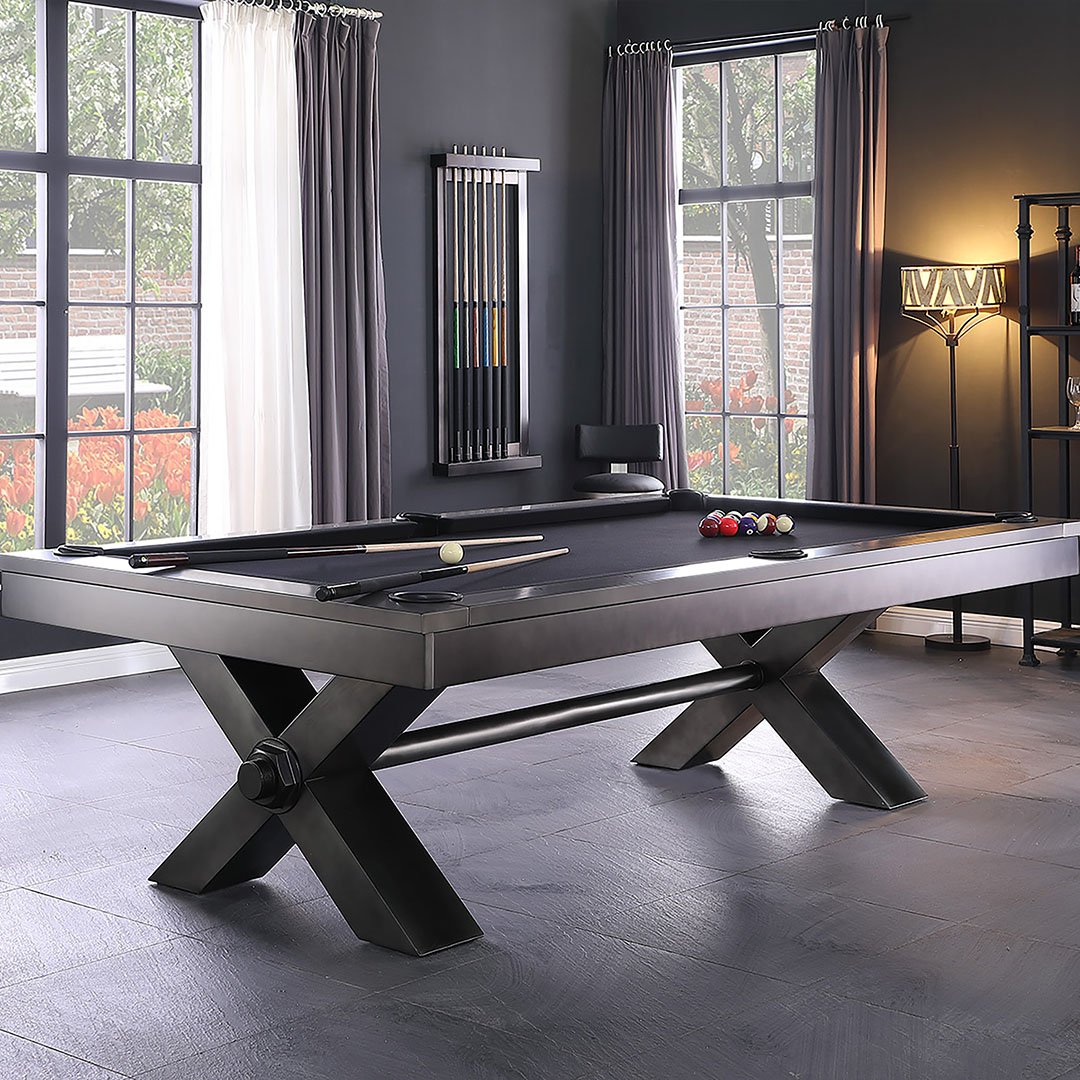When Was the Pool Table Invented? The Surprising Historical Origins
The beloved game of billiards has evolved over centuries from an outdoor lawn pastime to a global sports phenomenon. But when was the pool table invented, and how did the modern pool table come about? Tracing the origins and key innovations that shaped its development tells a fascinating story intertwined with culture and technology.
Billiards Begins as a Lawn Game
To understand the history of the game of pool, we have to understand the history of billiards first.
Billiards comes from outdoor lawn games played in Europe in the 15th century. Variations like croquet and golf involved hitting balls across grass using wooden sticks called maces. The games were popular among British nobility and royalty as leisure garden activities. The equipment was primitive compared to the manufactured balls and cues of today - balls were made of clay or wood, while hoops or pegs served as targets.
But the concept of striking balls with angled sticks took hold. By the 1600s, early forms of the game migrated indoors as “table billiards” using rudimentary tables. The sheltered indoor game allowed billiards play to continue regardless of season or weather. Tables featured a raised edge to keep balls on the playing surface, often with holes or pins as targets. The maces evolved into the first cue sticks with tapered tips, and an indoor gaming sensation was born.
Early Table Designs - 1600s to 1700s
The early table billiards game seen in Europe in the 1600s was very different from the modern pool. Instead of a flat slate surface, tables had simple wooden plank playing beds, which resulted in uneven and unpredictable ball motion. There were no pockets at first, just arched rails to keep balls on the table. Hazards came in the form of holes, pins, and pegs scattered across the plank, which players had to avoid knocking balls into. The mace cue sticks still resembled outdoor grass billiards equipment.
By the late 1600s, pockets were introduced to collect balls, though pins remained. The pockets were not cut-out holes yet but rather arched netted hoops along the rails. Cushions graduated from straw to cloth. Despite the crude equipment, table billiards captivated nobility who wagered on games. Tables were commissioned with great craftsmanship and stored in ornate game rooms. As the 1700s progressed, tables standardized more, using square corners and pocket holes. The evolution transformed billiards into a refined pastime and gentleman's obsession.
Slate Revolutionizes Billiards Tables in the 1800s
The introduction of slate as the preferred playing surface for billiards tables was the pivotal innovation that created the modern pool table. Before slate, hand-carved wooden plank beds warped and bounced inconsistently, frustrating serious players. Balls would roll and react differently across the table, limiting the flow of play. Slate's perfectly flat surface and density provided the first truly consistent, predictable playing field. This standardization enabled players to refine techniques knowing the slate's performance would be uniform. Slate also reduced vibrations for superior ball control.
With origins around 1825-1830, slate beds sparked a billiards renaissance. Previous unbeatable records were shattered on the consistent slate allowing prowess to prevail. Expert players relished slate's playability, and billiards became a genuine test of talent.
Pool Tables Go Global in the 1800s
The late 19th century saw an explosion of pools internationally beyond Europe and Britain. Mass production enabled tables to be exported worldwide. Railroads and steamships carried pool tables across borders at unprecedented rates. The British Empire's reach spread early billiards variations to colonies and trading partners globally. Premier billiards factories like Brunswick thrived stateside to meet demand as the game engulfed North America.
Whether played in basements, barrooms, or ballrooms, pool was a worldwide sensation by century's close. National preferences spawned variations in equipment and rules but the sporting and social spirit united all.. Almost overnight, pool transformed from a niche pastime into the global recreational sensation we enjoy today.

Rule Standardization and Pool Hall Culture Rise - Late 1800s to 1900s
By the late 19th century, billiards’ lack of organized structure was limiting its potential as a serious sport. Regional rule variations meant tournaments lacked consistency. The need for fair standardized play drove pivotal developments starting in the 1880s. The new Balkline rules increased organization, while other codes followed, dictating fouls, penalties, equipment specifications, and more.
Governing bodies formed, like the Billiard Congress of America in 1948, to unify the sport under consistent regulations like standard styles and designs of pool tables. This enabled the first true international championships and celebrity players like Willie Hoppe.
Just as important was the rise of pool halls and taverns catering to working-class players in the late 1800s. Pool became a popular social pastime associated with rebelliousness. Halls fostered community and competition for laborers alongside theaters and taverns. Champions were propelled to stardom, inspiring upcoming players who could relate.
By the early 1900s, pool had been transformed through standard regulations into an organized competitive sport with integrity, while also spreading as an entertaining refuge for the masses. The late-era fusion of structure and accessibility cemented pool’s lasting global legacy.
Pool at the Movies
By the 1960s, the popularity of pool as a recreational activity and organized sport had declined significantly from its heyday in previous decades. However, pool experienced a major resurgence thanks in large part to two iconic movies. The 1961 film The Hustler, starring Paul Newman as pool shark "Fast Eddie" Felson, introduced pool to a new generation and glorified the underground hustling scene. It reinvigorated public fascination with the sport.
Even more impactful was Martin Scorsese's 1986 sequel The Color of Money, which saw an aged Felson mentoring a young upstart played by Tom Cruise. The electrifying pool showdowns and competitive drama sparked a widespread cultural renewed obsession with the game. A new generation of players headed to pool halls and pool associations saw youth enrollment skyrocket in the 1980s and 90s. The films made the rebellious image of the pool hall cool again, cementing its revival as both a hobby and competitive sport for decades to come.
Women and Pool
For centuries, pool was deemed a man's activity, with billiards rooms and halls excluding women entirely. But starting in the 1900s, a few pioneering female players emerged, struggling against discrimination to compete with men. Hall of Famer Ruth McGinnis won the women’s title at the 1928 U.S. Open straight pool championship. In the 1960s and 70s, pool stars like Jean Balukas and Loree Jon Jones fought perceptions to prove women could excel at the sport. They paved the way for female professionals.
While still mostly a male-dominated activity, from the 1980s onward, women like Allison Fisher achieved world renown in 9-ball, winning previously male-exclusive tournaments. Today top female players from across the globe compete professionally and recreationally with men, and women's leagues thrive.
Design Evolution and Cultural Trends
Besides gameplay, pool table styles themselves reflected changing cultures from decade to decade. Ornate, decorative Victorian-era pool tables gave way to Craftsman and Art Deco styles in the 1920s-30s. Mid-century modern cues and slick table designs aligned with the 1950s-60s minimalism. Contemporary tables incorporate digital scoreboards, accent lighting, and accessories echoing today's tech-integrated recreation, not to mention a wide range of shapes and sizes for those who want to explore the different dimensions of pool tables.
Custom tables became status pieces among the wealthy. For example. the famous "Mona Lisa" table owned by Elton John is valued at around $200,000. Certain antique tables now auction at six-figure sums as collectible cultural artifacts.
Legacy as a Popular Recreational Activity
Today, pool and billiards remain deeply embedded in culture as popular global pastimes. Snooker, English billiards, and American-style pool are professional and Olympic sports played by millions. Amateurs flock to casual games for camaraderie and competition. Stylish tables outfit rec rooms, bars, and bowling alleys across over 100 countries worldwide.
But it took centuries of equipment evolution, from early lawn games to slate beds to standardized leagues, to cement billiards as an enduring fixture. Every small refinement improved playability, integrity, and accessibility down the generations.
So, the next time you line up a shot, take a moment to appreciate the rich history made possible by pioneers of the past.
Pool & Billiards Tables from Watson's
If you’re interested in finding a new pool table, shop our selection of pool products at Watson's.
When you shop with us, you’ll find an amazing selection and personalized service, along with the guaranteed lowest prices in the USA. We have a wide variety of pool tables, air hockey tables, arcade cabinets, and more to make your rec room complete. Shop the latest rec room essentials now or stop by your nearest Watson’s location today.
FAQs
When were the first pool tables invented?
The earliest known indoor billiard tables emerged in Europe in the 1600s as simple wooden rectangles with plank playing surfaces. The first tables using slate beds appeared around 1825-1830, marking the genesis of the modern pool table.
Where did billiards originate?
Versions of billiards originated as lawn games like croquet and golf in 14th/15th century Europe, especially among British nobility. The games migrated indoors in the 1600s using primitive wooden tables, evolving into early forms of pool and carom billiards.
How did pool tables spread around the world?
British colonial expansion initially spread early forms of billiards worldwide. In the late 1800s, American billiards factories enabled mass production of pool tables across North America along with railroads. This allowed pool tables to blanket bars, halls, and homes across the globe.










